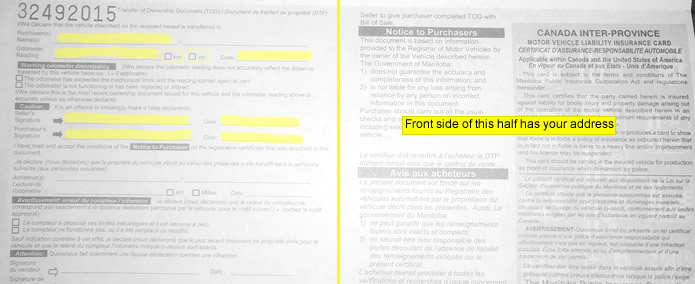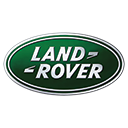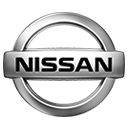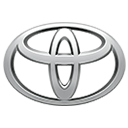5 Steps to Selling Your Used Car
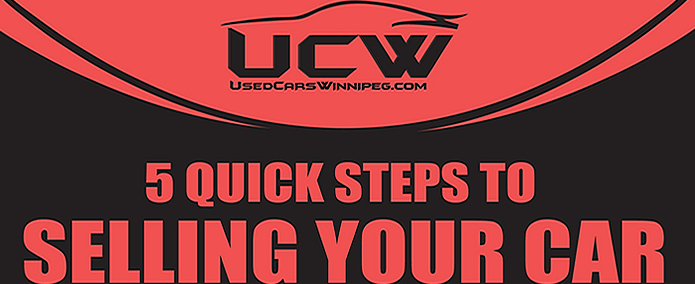
Being in the used cars business for many years, I frequently receive phone calls from people wanting to purchase something in stock, but are waiting until they sell their own vehicle first.
Some people have the understanding of their options and process for disposing of their vehicle, others do not.
5 Steps to Selling Your Used Car
Some people have a good handle on the process of selling a car, truck, or van, many people struggle with it.
In most instances, these struggles can lead to less of a financial reward at sale’s end.
It is a fact that some people do not have the personality or characteristics to deal with sales, while others find the legalities of Manitoba safety laws and transfer of ownership paperwork confusing. In some cases it is a combination of both.
Like anything, it becomes easier when their is a base of knowledge to stand upon. A rock of information to base your sale or trade-in interaction that will lead to some strength in your position.
In any case, there are still some basics for just about anyone to follow.
I have whittled down the list to 5 basic steps and added a sweet easy-to-follow quick step infographic.
1 – Where to sell your used car?
Unlike several years back when all you could do was run a print ad that costs money,  there are now several ways (most free) to sell or dispose of your vehicle.
there are now several ways (most free) to sell or dispose of your vehicle.
To know which method is best, it is important to understand & take advantage of what exactly is available to you –
- Private ads (online and offline) – There are 100’s of online classified sites for advertising, reaching a huge online market of buyers. While some sites are more popular than others, it is always a good idea to use multiple sites to increase your coverage. Also, don’t be afraid to go old-school and make a flyer. A great place to post a flyer is on bulletin boards in stores and universities.It only takes one person to buy your car, and that one person may come from a less travelled method or classified site.
- Auctions – Each city usually has a number of auctions available to public sellers. Call around to find out the process and sellers fees. Some seller fees may increase as your sale price reaches higher levels.
- Sell to a recycling company – Your vehicle may be on it’s last legs in terms of life cycle, making it an unworthy candidate for sale. If it is time to send it to the recycling yard, then you have a lot of choices. Every city has a large choice of yards that recycle used vehicle parts. Call several yards and get pricing. Prices are mostly tied to gross weight of your vehicle as well as world scrap metal prices.
- Trade in to a dealer – A dealer will take your vehicle, regardless of condition as a partial payment on the purchase of a vehicle from their stock.
The first two require more time and effort, but are the most financially rewarding. The second two are less work but yield less money.
2 – How much do you sell it for?
It is difficult for the average person not to over/under value your car. The guides designed to assist in doing so are usually more confusing and inaccurate. There are red book, blue books, and black books…I am in the business and don’t know what the difference is, nor have I ever needed to!
I have found that the most accurate way to valuate your vehicle is to research it online and see for yourself what the market price is.
Be sure to compare “apples to apples”, meaning if your vehicle is safetied, be sure to compare it to other safetied vehicles. Other key comparison points are as follows:
- Overall Vehicle Condition – Make sure to compare the overall condition with similar conditioned vehicles – one cannot compare a beat up version to a pristine version of any product; cars are no different.
- Vehicle Mileage – Kilometers impact worth. The lower kms, the higher the price.
- Vehicle History Reports – previous accidents and write off history can also affect vehicle worth. If you were to write off a vehicle that was already written off, your payout from your insurance would be much lower than a non-written off vehicle.
- Trade-in Value – Call a few car dealers and ask them to “ball park” a trade in value. Most should have no problem helping you out. If it turns out your used car is close to being ready for the scrap pile, call the various recycling yards to get a price. You may even wish to donate it to a deserving charity for a tax receipt?
3 – Preparing the vehicle for sale?
Clean your vehicle – There is a reason car dealers spend so much time and money on detailing vehicles. A clean vehicle sells easier and for more money than a dirty one.
A dirty vehicle is just another obstacle for a potential buyer to overcome. In most cases, it will be used as a weapon to reduce your price. If clean, it is one more positive in your sell.
When cleaning your vehicle, view it as a buyer would. Cleaning your own car is sometimes done with a complacent view. Ask yourself what you notice if you were out purchasing a new-used vehicle?
Buyers react to clean, not to complacency. Clean, clear, and uncluttered!
Time for photos – Do not use stock photos found on the internet. Make sure pictures are of the actual vehicle and are as clear as you can make them. You can save yourself a lot of time and energy by doing so. You can waste a lot of time showing your vehicle to people who didn’t see that one flaw or upholstery tear. Believe it or not, people appreciate the honesty associated with showing the negatives. In fact many hunt for the negatives knowing they will be priced accordingly. There is nothing worse than going to see a vehicle that looks nothing like the advertised photos. A waste of time for all involved. Photos should be clear – not too close and not too far.
Have all documentation ready for any potential buyers at all times. T.O.D. (transfer of ownership), safety papers, history reports, and repair invoices (if you have them).
4 – Everyone wants to negotiate!
You are going to get calls and emails asking how low you will go in price? These are generally a waste of time.
Many emails that don’t include phone numbers are usually scam related, so be careful.
I don’t recommend negotiating on the phone as these are “lazy buyers” and/or maybe people looking to “flip” your vehicle for the price you should/could have sold it for in the first place.
Serious buyers always come to see the vehicle.
The price you set for your vehicle is based on the research you have done. This research has shown you the market value of your vehicle.
People will come and point out every imperfection hoping it will lead to you lowering your price. If you did your research properly, your price has already been adjusted.
I always find it a good practice to point out the flaws/negatives yourself – it shows honesty and integrity, and really let’s the customer know what they are buying – no surprises.
Some people will still try and use the flaws to reduce your price. The best way to handle this is to let them know you have already accounted for the flaw in the price you have listed. You might also say, “well the tires are only 60%, but if I were to put new ones on I would have to charge more money”.
Unless you really need the money, don’t be afraid to walk away.
5 – Complete the sale!
A buyer and yourself have agreed on terms of a sale of your used car, now what?
For starters, never hand over keys or paperwork until you are paid in full. If the person truly wants to deal for the vehicle they will have no problem doing it by a few clear cut rules that avoids anyone being hurt or scammed.
Never take a check – checks can bounce or have stop-payments placed on them, creating a huge headache for you to recover your monies or vehicle. What if you pointed out that tear in the upholstery before the sale, and the person accepts this tear and agrees to terms. What if they pay by check and then stop payment after driving away with your car using the tear as an excuse to demand a lower price? Leave nothing to chance – Cash is king, but a bank draft, or a certified check is acceptable
Always be clear about what you know! Do not try and hide anything!
A payment method is agreed to, so on to the Bill of Sale – A bill of sale must include several pieces of information in order for it to be legal. While you can find generic bills of sale by searching Google/Bing/Yahoo, I do suggest that you put any announcements about the terms of the sale right on the bill. For example, if the air conditioning doesn’t work and you have announced it to the buyer, put it in writing. If there is a tear in the upholstery, put it in writing. This leaves nothing to chance and keeps you honest. It would be a good practice to have a bill of sale already ready prior to selling that lists the key announcements. this can be used as a checklist when showing the vehicle.
In Manitoba, private sales don’t need to have safety papers included with the sale papers. If a vehicle is currently safetied, Manitoba Public Insurance (MPI) will have a date stamped on the transfer of ownership document letting you know when the current safety expires. However, If you have a seller’s copy of the safety, you should provide the buyer with it.
The Transfer of ownership document (T.O.D.) needs to be signed on the back beside “seller”, and include the sell mileage and date and provided to the buyer. You can separate the part that includes your address and personal information.
Remember to keep copies of paperwork for your records.

